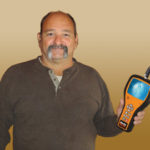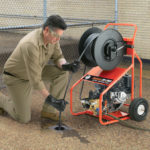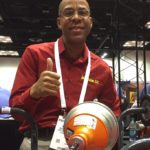High-pressure water jetters come in all shapes and sizes. There are massive trailer jetters with huge water tanks that blast out 4,000 pounds per-square-inch of pressure at 18 gallons-a-minute flow. There are gasoline-powered portable units that attempt to suck your garden hose dry while producing 3,000 psi. And, as we mentioned before, there are small electric jetters that push out a paltry 1,500 psi at 1.4 gallons-a- minute. Since most contractors live by the maxim that time is money, why would someone voluntarily pick a unit with less power? After all, no one ever called a manufacturer’s hotline to complain that their unit was too powerful!
A lot of the appeal of smaller units has to do with portability and accessibility. For example, a trailer jetter would do you absolutely no good if your job was on the top floor of a hospital. No, they won’t fit up the elevators! And there’s the issue of exhaust fumes from internal combustion engines. Supermarkets, restaurants, cafeterias, dormitories, apartment buildings, office buildings, most industrial settings and the aforementioned hospitals all prohibit the use of gasoline or diesel-powered machines inside their walls. While options exist to run high-pressure hoses from the jetter sitting outside the building to the job site through the use of portable reels, the most convenient solution is to use an electric jetter. One person can handle the job, and there is less chance that Murphy’s law will intrude on your day.
The pressure and flow ratings of small jetters are limited by the fact that their electric motors are designed to function in private homes, small businesses and multifamily dwellings that tend to be protected by 15 amp circuit breakers. However, it turns out that they have more than enough power to open and scour the small diameter pipes that they were designed to clean. The reason for this has to do with our eating habits.
Twenty-first century Americans consume much more grease, fat and oils than our grandparents did 50 years ago, and the best evidence of this dietary change is in our drain pipes. Grease has replaced soap, hair, paper and the ever popular ‘foreign object’ as the most likely cause of a clog in a small diameter drain. Jetters are exceptionally well-suited to remove grease, fat and sludge from pipes, which, because of culinary trends, gives them greater utility as the years go by. Sure, you can poke a hole in a grease clog with a snake-style machine, but it’s likely to ‘re-heal’ in a matter of hours or days. If you jet the same drain, it will be clean as a whistle when you’re done.
The beautiful thing about all of this is that you don’t need a hulk-sized jetter to clean a 2- inch kitchen drain. A small unit like the General JM-1000, with its 1500-psi pressure rating and 1.4-gallon-a-minute flow, will make short work of any grease clog in a 1 1/2 to 3- inch pipe, and that’s just where the problems lie.
Most of the grease poured down kitchen sinks never reaches the main drains and laterals that the JM-1000’s bigger cousins are built for. The grease cools and congeals within 30 feet of the sink, slowly eroding the plumbing system’s ability to handle the wastewater flow that it was designed for.
And we’re not just talking about homes and multifamily apartment buildings here; anyplace with a food service operation qualifies as a potential hot spot. Hospitals, lodging establishments, college dorms, nursing homes and shopping malls come to mind as places with potential grease stoppages. And who would be in the market to purchase a smaller jetter like the JM-1000? Plumbers, facility maintenance contractors, landlords, restaurateurs and homeowners. In other words, almost everybody!
So remember; small is the next big thing! Take a look at the JM-1000 and imagine all the possibilities!
Contact the Drain Brains® at General at 800-245-6200 or by email [email protected].



